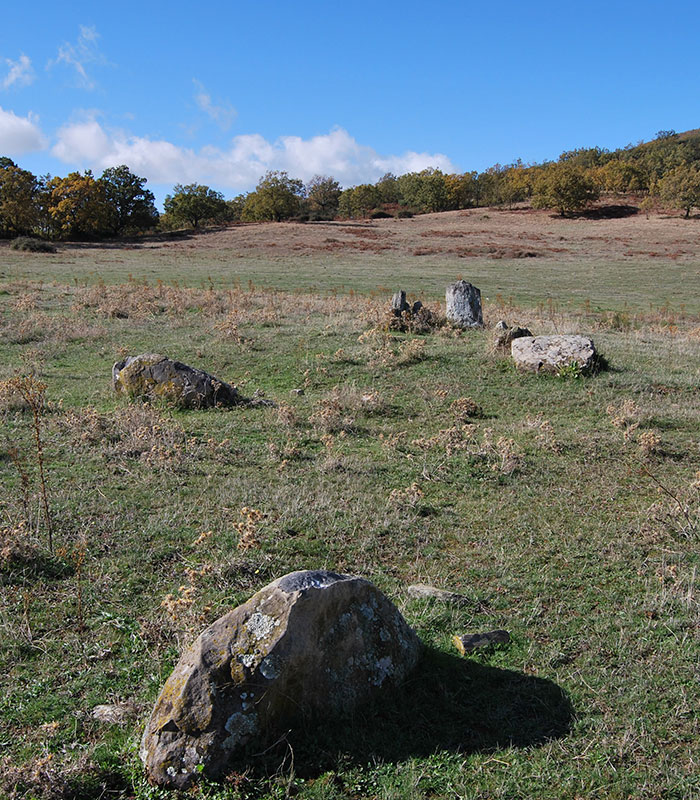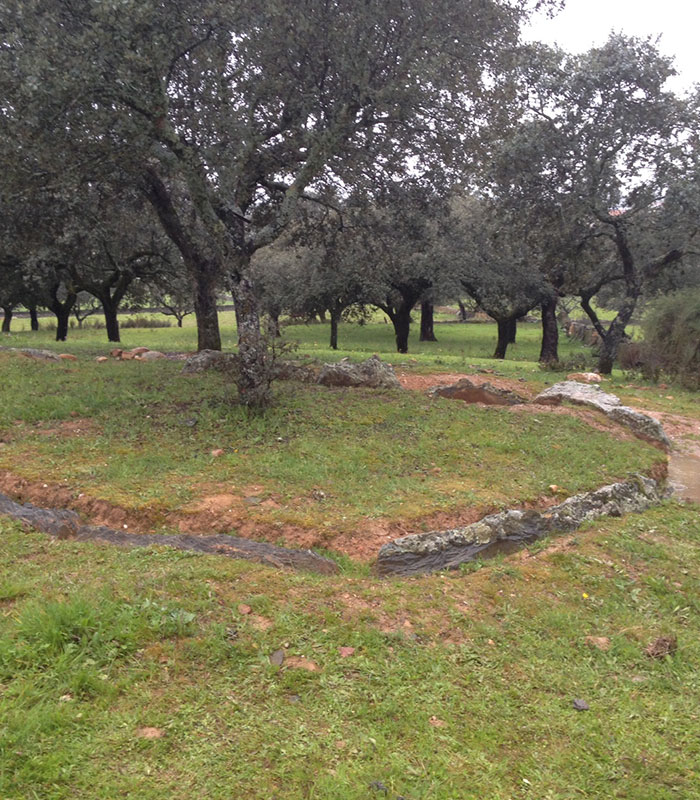Megaliths are monuments constructed from large stones, which is what the name means. In the Villuercas-Ibores-Jara Global Geopark of the UNESCO dolmens are good examples of these, in particular that of Deleitosa and that of La Coraja in Aldeacentenera. The remains are the most long-lasting traces of a system of beliefs and social organisation which originated between the fourth and third millennia B.C., which even today is highly enigmatic to science. These stone constructions are scattered over much of Europe and are of special relevance in the south-west of the Iberian Peninsula.
During the Neolithic and the Chalcolithic periods in what is now Extremadura there was a considerable expansion of the population of human communities. This was related to the increase in agricultural production and food surplus. Everything points to the fact that the exploitation of the landscape was part of an agricultural, stockbreeding, and forestry system, and according to the archaeological evidence the landscape where those ancient societies lived cannot have been very different from the dehesas of Extremadura we know today, alternating with cereal crops.
Progress in the use of the territory during the breakthrough of the Neolithic brought with it a more complex and hitherto unknown society. The nomadic communities of hunter-gatherers who had previously inhabited the area were replaced with others of sedentary farmers and stockbreeders. This culture constructed dolmens and erected menhirs for more than a millennium and some three hundred are currently known in Extremadura.

